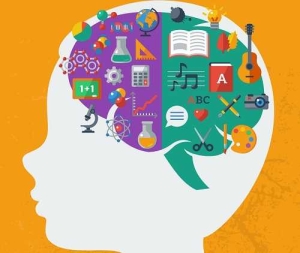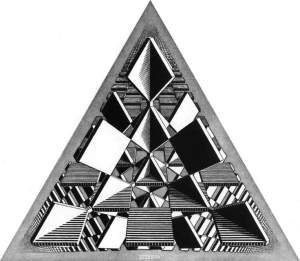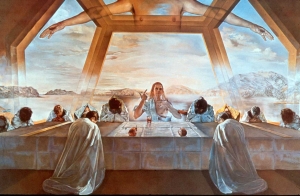How every school can create a great STEAM program
 For a while now, schools have been slowly merging science and math lessons with visual arts as a way to add a hands-on component, and perhaps a dash of culture, to ordinary STEM curriculum. But the move from STEM to STEAM can also impact the way students synthesize abstract mathematical concepts and make new brain connections, according to Denise Douglas-Faraci an associate professor at Kaplan University’s college of education who frequently works with teachers at the intersection of art and math. Douglas-Faraci recently shared her decades of experience in making every STEAM program successful.
For a while now, schools have been slowly merging science and math lessons with visual arts as a way to add a hands-on component, and perhaps a dash of culture, to ordinary STEM curriculum. But the move from STEM to STEAM can also impact the way students synthesize abstract mathematical concepts and make new brain connections, according to Denise Douglas-Faraci an associate professor at Kaplan University’s college of education who frequently works with teachers at the intersection of art and math. Douglas-Faraci recently shared her decades of experience in making every STEAM program successful.
1. Take time to build momentum
Schools don’t have to rush in all at once. In fact, it could start with just a couple of teachers — either art and math specialists or a grade level teacher at the elementary level along with their grade’s planning team. And a bit of common planning time will go a long way. “It could be just 20 minutes a week. It doesn’t have to be an hour,” Douglas-Faraci said. “Once the kids get under way with the curriculum and people have an opportunity to see all the affordances of blending art and math together, for example, there may be other teachers who decide to come on board the next year or next semester.”
2. Share knowledge back and forth
Once teachers carve out some time to meet, they can begin sharing what’s important from their perspective, and how it relates to the big picture. That’s when the real collaboration can begin. “The art teacher knows through their formal study of art history that there are many art masters who incorporated math principles into their masterpieces,” Douglas-Faraci explained. “Of course Leonardo Da Vinci and M.C. Escher, for instance. But the art teacher may not know the granular detail about the math principles and may not have the vocabulary to describe the math.”
M.C. Escher’s Three Intersecting Planes
3. Keeping flexible schedules is fine
It won’t always be possible for STEM and art links to occur at the same point during the school year, and that’s OK. Instead, teachers should be upfront with students. “If the kids are told, ‘Listen, during this semester the art teacher and the math teachers are going to work together to present an art and math lesson,’” Douglas-Faraci said. “Maybe the art teacher’s lesson will occur in September but you can tell students to mark their calendars because at the end of October, the math teacher is going to bring this art-oriented lesson to the classroom.”
4. Use the world around you to help create lessons
Finding common links between the two curriculum is rarely a challenge. Science classes can turn to nature, where any number of objects with an artistic, scientific, and mathematical bent — such as pinecones or spider webs — can be brought into the classroom. Typical art class topics like Cubism can become an avenue to explore shapes. And in math, fractions and ratios can inspire lessons on mixing paints to create warm and cool secondary colors.
5. Build deeper learning
Recognizing patterns can help students make connections between subjects and form the bridge for long-term memory. When students can apply some of the science and math principles they’ve learned in the art room, it can move the assignment to a higher level on Bloom’s taxonomy. “For instance, in Dali’s Last Supper, the composition consists of basic geometric constructions,” said Douglas-Faraci, pointing to the artist’s use of complex mathematical ratios and twelve-sided shapes mirroring the twelve apostles. “Or think of the math magic square. You can create compositions consisting of rows that would allow the student in the art experience to apply and synthesize the principles of the magic square — these shapes can be dissected into polygons and so on.”
 Salvador Dali: The Sacrament of the Last Supper
Salvador Dali: The Sacrament of the Last Supper
6. Use technology in whole-group settings
When teaching to groups, teachers can bring in experts and conduct virtual field trips right from their classrooms. The Center for Interactive Learning and Collaboration‘s website is designed for educators looking for videoconferencing opportunities, and includes content from cultural institutions such as the Cincinnati Art Museum, which features a video lesson on tessellations. Interactive whiteboard software often features an asset library that could be used to create various shapes and constructions in both math and art contexts while teaching to whole groups.
7. And let students explore technology individually, too
Software like Google Drawings let students explore shapes and patterns on their own or collaboratively with peers. “It’s better than PowerPoint because there are more tools than just shapes,” Douglas-Faraci said, adding that it can be used in both the math and art classrooms for different projects. “Google Drawings in the art classroom could provide a study for a drawing that would eventually go on paper or a painting that will end up on canvas.”
- TC- What student choice and agency actually looks like - November 15, 2016
- What student choice and agency actually looks like - November 14, 2016
- App of the Week: Science sensor meets your smartphone - November 14, 2016

